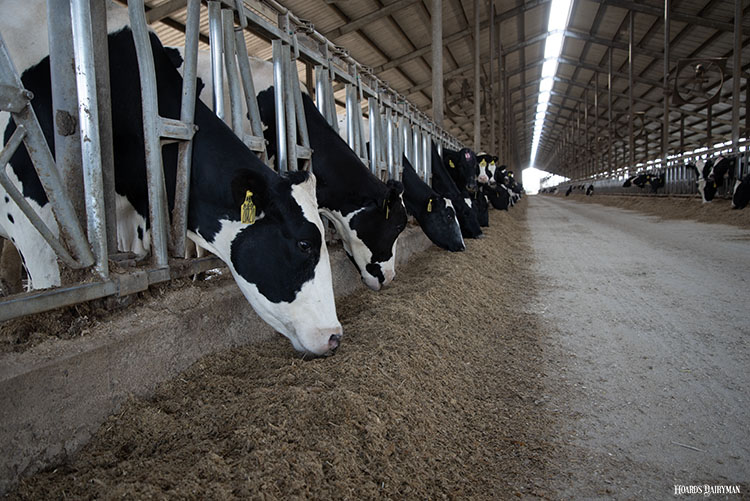
The concentration of neutral detergent fiber, hereafter referred to as fiber or NDF, is the major determinant of the digestibility and energy concentration of a feed. According to the Lucas test of digestibility, all non-fibrous constituents are completely and uniformly digested, whereas fiber is incompletely and variably digested. In simpler terms, the digestibility of non-fiber components leans toward 100% in most circumstances, but the digestibility of the fiber depends on multiple factors. Because of this, the digestibility of fiber, also known as NDF digestibility or NDFD, is the second major determinant of energy concentration of a feed.
In a recent study from our laboratory, we evaluated how different factors affect the NDFD of corn plant tissues. One factor of interest was the agronomic environment, which we tested with a limited or abundant environment. For the limited environment, corn was seeded at a population of 36,000 seeds per acre and fertilized with 155 pounds of nitrogen per acre. For the abundant environment, corn was seeded at a population of 24,000 seeds per acre and fertilized with 200 pounds of nitrogen per acre. In addition to the environmental variables, we included a conventional variety and a brown midrib (BMR) variety of corn, which is known for having greater NDFD than conventional varieties. Finally, we harvested corn tissues when the crop was either tasseling (VT) or at an early dent (R5) stage of maturity.
The figure below shows the effect of environment, genotype, and maturity on NDFD, and all values are expressed on an NDF-basis. One observation is that environment affected NDFD only on the leaf blades of the upper portions of the plants, being 78.5% and 67.5% for the abundant and limited environment, respectively. In the other tissues, the environment did not affect NDFD.
Another observation is that the BMR variety had greater NDFD in all tissues analyzed and, depending on the tissue, the difference in NDFD ranged from 2.3 percentage units to 20.1 percentage units. We also saw that maturity affected NDFD substantially, with differences in NDFD from 10.1 percentage units to 19.5 percentage units.
A major conclusion from this study is that NDFD can be affected by the agronomic environment (namely planting population and fertilization). However, the NDFD of corn plant tissues is much more sensitive to other factors, such as hybrid selection and harvesting time.









